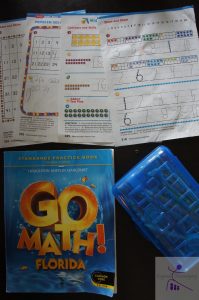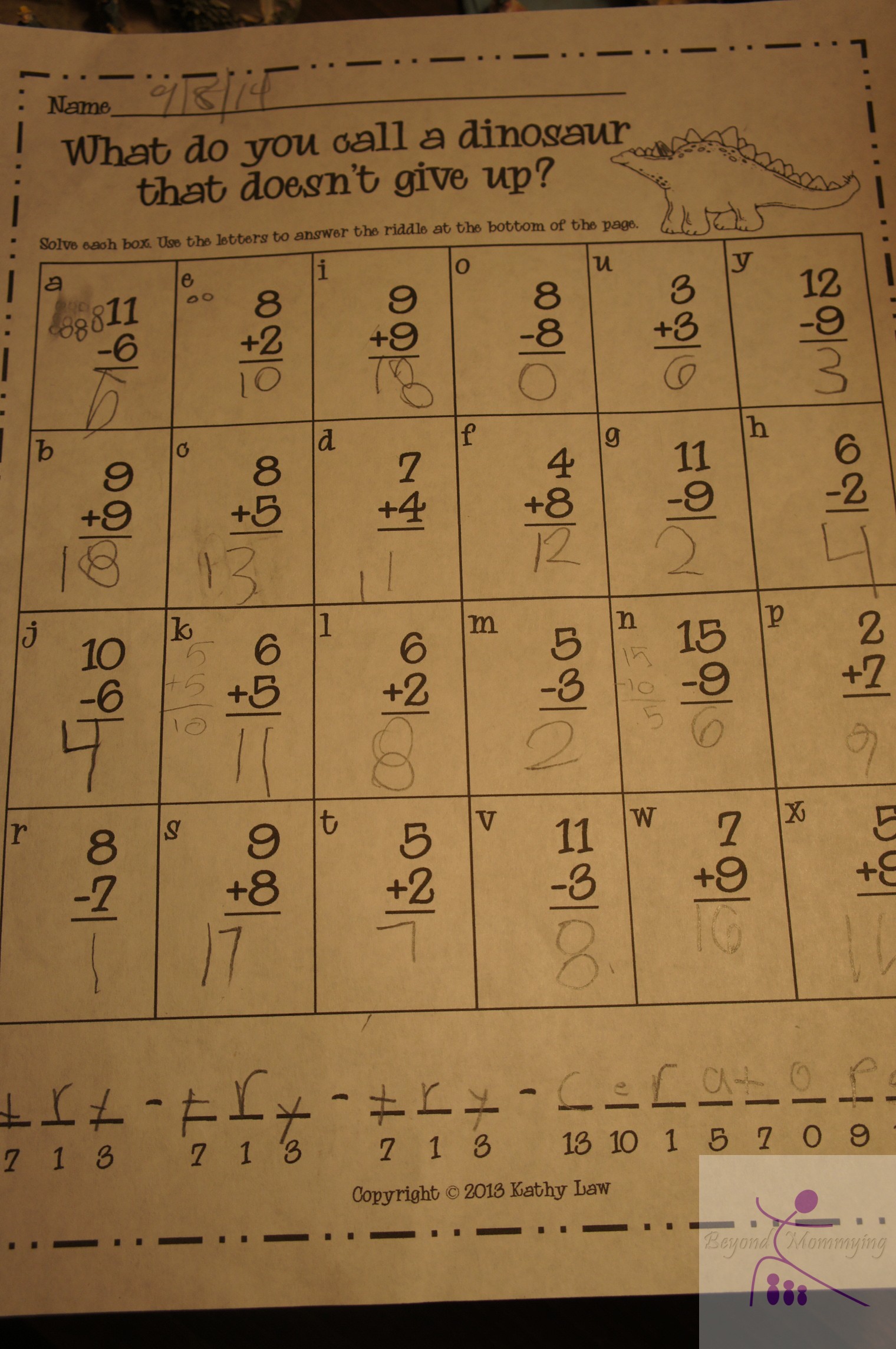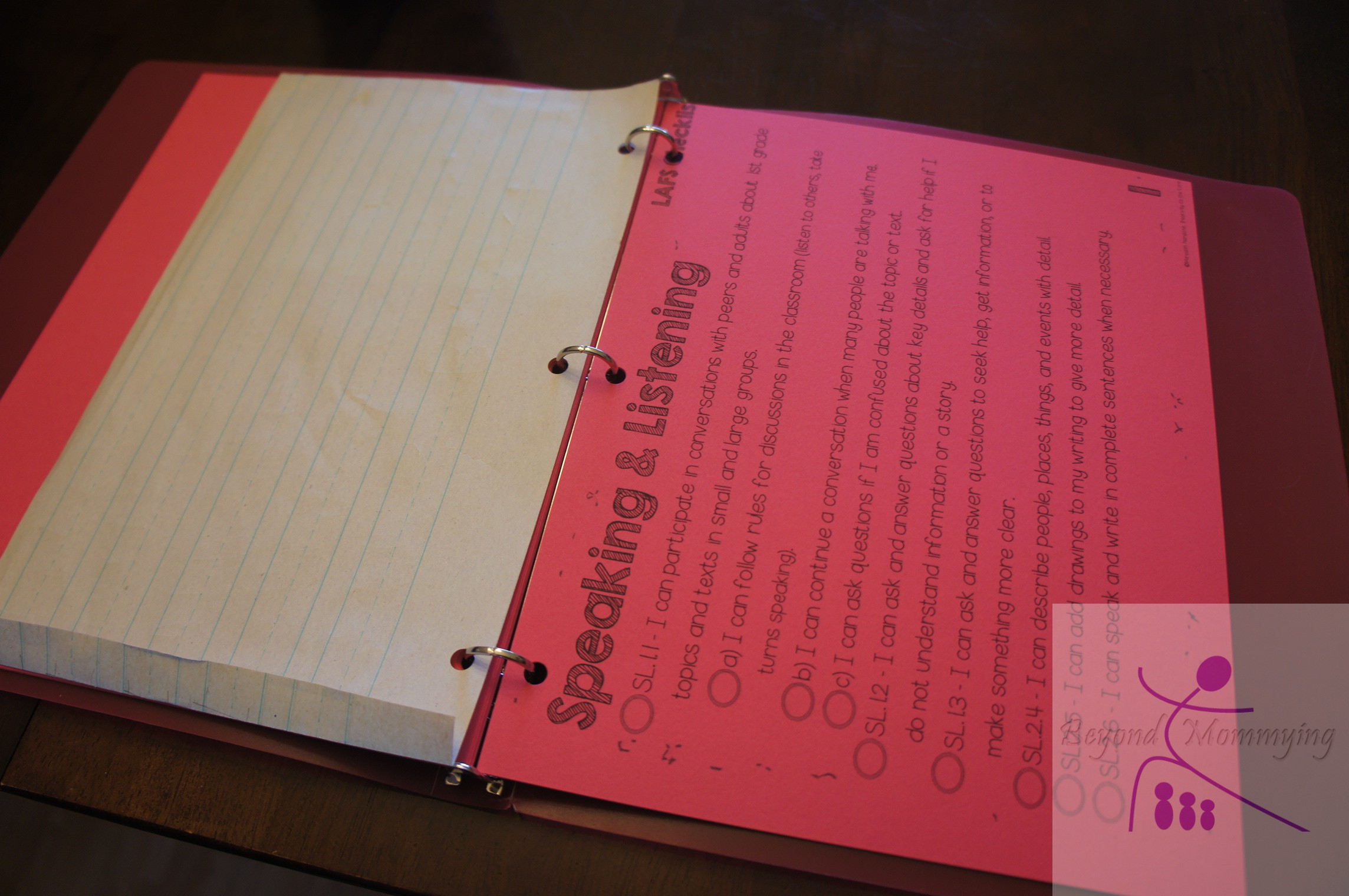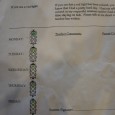I’ve struggled a lot with kindergarten this year. Between the homework, our teacher’s maternity leave and too much TV watching I’ve had a lot of frustrations. What really worries me going forward, though, is the Common Core standards that will be dominating childrens’ educations.
 Up to now I’ve really only experienced Common Core in the realm of mathematics (I ranted on this before in “UnMastering Math”) and like many American parents, I’m frustrated, confused and upset by what I see my 5 year old bringing home. In a frustrated stupor one day a few weeks I go, I took my ranting to Facebook and honestly, I’m really glad I did.
Up to now I’ve really only experienced Common Core in the realm of mathematics (I ranted on this before in “UnMastering Math”) and like many American parents, I’m frustrated, confused and upset by what I see my 5 year old bringing home. In a frustrated stupor one day a few weeks I go, I took my ranting to Facebook and honestly, I’m really glad I did.
While I expected supportive responses from other irritated parents, what I got was help, explanations and the rationale behind what I though was a ridiculous homework assignment for my kindergartner (for the record, I still think the assignment was beyond her scope of understanding because if it hadn’t been, we wouldn’t have been so frustrated over it).
The exchange between myself and my teacher friends (some of whom are also parents) went like this:
ME: Honeybun’s homework today: There were 3 cats, 5 dogs and 4 horses at the vet. How many legs were at the vet? Draw a picture and write a number sentence to match the problem.
Ok, so I’m not a teacher of Common Core Mathematics, but isn’t that multiplication? And doens’t one need to know addition before they can do multiplication?
Add it to the reasons I hate Common Core Mathematics!Hubby’s Best Man’s Wife and Elementary Teacher (WET): You can use repeated addition for that!
I’ve read many other blogger opinions on Common Core mathematics with many differing viewpoints (for more examples, see: Huppie Mama, The Mindful Mathematician and from a Frustrated Parent)
I’ve learned a lot and and come to many conclusions, including coming to accept that my frustration with what my child is learning may not be just a Common Core issue, but could be specific to Florida and/or her school and/or her teacher. And after my reading and conversations (many more than just the above) here’s where I now stand on Common Core mathematics: I just don’t get it.
I’ve ranted before about how I GET math and therefore I’m good at math. I have an inherent understanding of how numbers work and I guess that helped me easily learn math concepts and I became one of those (apparently rare) adults that find math easy.
So what causes me trouble with Common Core Mathematics is the methods they are using to teach children how numbers work. I see now that the way I was taught math may have left many of my peers frustrated and overwhelmed because they didn’t understand the WHY of the mathematical processes we learned where as I was able, on my own, to see the reasoning (one reason I absolutely HATED proofs in Geometry…why do I need to explain it in 500 steps when it just is?!?!)
I want my children to also understand WHY numbers work the way they do and why we use the processes we do. But where I am lost as a parent is the process of learning the why. I think for those of us that know the processes (whether or not we understand the why behind them) have trouble seeing the value behind learning the why and also struggle with the process used to learn why because we were never taught it ourselves.
For me, where Common Core Mathematics is lacking is in parent education! If a child is going to have homework that is beyond their scope of independent learning, then parents need to be able to step in as support educators but how can we if we don’t understand the new methods? I can look at a problem and know the answer and how to get the answer the way I was taught, but that’s not how my daughter is being taught. I get frustrated with not being able to guide her learning. I get overwhelmed by the amount of time we spend on what I view as a simple problem. and I get irritated with the system that is asking so much of our young learners and not providing us parents with the proper support and education we need to help our children succeed.
It places us between a rock and a hard place. It makes us helpless and even worse, not helpful to our children. It causes us to have to relinquish control of our children’s education when many of us want to be involved. It makes us disenchanted with the entire education system all because of a simple change is how math is taught.
BONUS: An explanation given to me by one of my best friends who is a first year first grade teacher on borrowing in subtraction: We were taught to just borrow, without an explanation as to why we could or should borrow. Children are now taught borrowing in relation to place value and that they are not just taking one away from the next number over. So, for example with 52-37 we were taught to change the 5 to a 4 and put a 1 in front of the 2 then do 12-7 and 4-3 to get the answer of 15. The only change is now teaching children that they aren’t taking 1 from 5, really they’re taking 10 from 50 and adding it to the 2 (basically changing it to 40+12 instead of 50+2). This is one of those concepts that was inherent to me as a learner but I can see how it would seem arbitrary to non-math thinkers when taut the “old” way. Basically, the process we use is the same but the intention and reasoning behind it is different: our generation “because that’s how you do it” and this generation “you’re not borrowing a number, you’re moving 10 ones”.









common core is to confusing for my 5 year old as well heck even with my 12 year old! I think they are going about it the wrong way,hopefully next year will be different.
I too hope that over time schools find a way to smooth things over with us disenchanted parents before it really hurts the public school systems that are already in a bad place!
My 6 year old is in public school. Agreed this is going to be a tough couple of years, especially when my husband and I can’t understand the homework.
It’s just so frustrating when you understand the problem, but not the process!
Great article. Three years in and I still find this new way frustrating. You nailed it with the lack of education to parents and the inability to help our kids. MAT is right as I have found much better lessons online for my daughter and often use them to help explain and supplement her work to make things easier. I just wish the system would realize this injustice and work to make it easier on all involved.
I agree. I think it’s becoming a battle over who is in charge of a child’s education. Most parents want to be involved but many schools seem disinterested in giving up any control over the way children are taught. So it’s now a power struggle of school vs. home and who is right (or wrong).
My daughter is 4 and will be entering elementary school next year. I’ll openly admit that I don’t know a lot about Common Core – except the bad press and rantings I see on Facebook – and I need to read up on it. I’m already a little scared. Thanks for explaining it in an easy way (using the vet’s office example). Needless to say I’ll be doing more research on it in the near future.
Jennifer, I hope you’re able to find some good information. The internet is full of opinions on Common Core, but it’s really hard to sift through and find anything that really explains what it is! My best advice going forward is to be as involved as possible with the school, teacher and your child’s classroom. I really wish I’d had more opportunities to be more involved but my younger two kids prevented a lot of participation but I am glad that I feel comfortable with our principal and know that if a major problem arose I could go to her and get it resolved.
I was up in Tallahassee not too long ago doing interviews for Comcast Newsmakers with State Lawmakers and education leaders and there was a lot of discussion about Common Core in our segments…they’re ALL still trying to figure it out too!
It’s ridiculous, really!